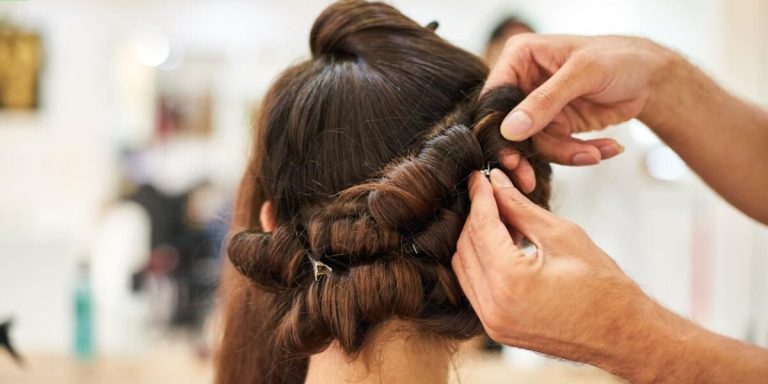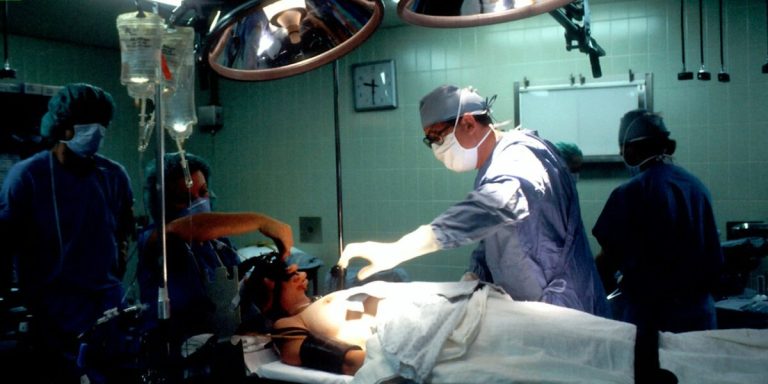Dog Hair Loss Treatment Home Remedies for a Healthy, Glossy Coat
Dog hair loss treatment home remedies can be a lifesaver for furry friends. Hair shedding is normal, but excess hair loss could indicate health issues in your canine companion. While it’s always advised to visit the vet and get professional advice, there are also natural treatments you may try at home that boost coat growth and overall dog well-being.
These DIY solutions not only strengthen their follicles and enhance healthy fur regrowth but they’re also easy on pockets compared to expensively extravagant therapies or medicines available commercially. Remember though, these alternative approaches demand consistency – offering significant results over time instead of overnight magic. So delve into this intriguing world of nature-based cures designed exclusively for our four-legged pals!
Did you know?
Contrary to popular belief, coconut oil isn’t just beneficial for human hair; it’s also a potent remedy for dog hair loss. When applied topically, its lauric acid content can improve fur health and encourage regrowth.
Understanding Canine Alopecia: Identifying the Cause
Canine alopecia, also known as dog hair loss, is a common concern for many pet owners in 2023. It can be attributed to various factors such as allergies, hormonal imbalances, infections or parasites. Understanding the root cause of your dog’s hair loss is critical before considering any type of home remedy treatment.
Home remedies for canine hair loss may prove beneficial only when we’re clear about what instigated it. For instance, if fleas or mites are causing your pooch’s relentless scratching and subsequent bald patches – using natural anti-parasitic treatments like apple cider vinegar mixed with water could make a difference in soothing their skin irritation and lowering parasite count.
On the other hand, if an underlying health condition such as hypothyroidism (low thyroid hormone levels) leads to coat thinning and brittle fur; dietary changes high in omega-3 fatty acids might assist by improving overall coat health whilst treating the disease at its core under vet supervision.
In essence: Identifying whether environmental allergens have made them itch constantly or perhaps stress has induced excessive shedding allows you to choose appropriate remedial actions intuitively while keeping professional advice within arm’s reach whenever necessary. Remember that although these home remedies can help alleviate symptoms they should not replace a visit to the veterinarian who will ensure proper diagnosis and treatment plan tailored specifically for each individual furry buddy!
Signs and Symptoms of Hair Loss in Dogs
Recognizing the signs and symptoms of hair loss in dogs is crucial for early detection that can aid effective home-based treatment. In some instances, dog owners often ignore or overlook these indicators assuming they’re part of natural shedding cycles.
One common symptom you might notice is an unusual amount of fur falling out during regular grooming sessions. Dogs do shed naturally, but if it’s more than usual and leaving noticeable bald spots on your pet’s skin, take note – this may indicate a problem.
Another visible sign could be redness or inflammation on the dog’s skin where hair has fallen out. This issue usually stems from persistent itching or scratching due to irritation caused by alopecia in dogs.
Let’s explore some simple but effective home remedies for treating ‘dog hair loss’:
Common Triggers for Dog Hair Loss
There are a plethora of factors that can trigger hair loss in dogs, and pinpointing the exact cause is like finding a needle in a haywire. However, understanding the common triggers could pave your way to uncovering suitable home remedies for dog hair loss treatment.
An Infestation of Parasites: One of the most prominent causes for canine alopecia is an infestation by parasites such as fleas or mites. Not only do they chew on your pet’s skin but also lead to excessive scratching which eventually results in hair fall.
Allergic Reactions: Dogs have allergies too! Yes, exposure to certain allergens may provoke hypersensitivity reactions leading to dermatological issues including hair shedding. The offending agent could be anything from food components (like soy or corn) to environmental constituents (such as pollen).
Poor Nutrition: Diet plays a crucial role not just in maintaining overall health but also preserving fur integrity. A diet deficient in essential nutrients might manifest outwardly with symptoms including brittle coat and significant thinning out.
Genetic Factors: There exist certain breeds predisposed genetically towards developing alopecia at some point during their lifetime. If you’re seeing bald patches spread symmetrically around your pup’s body without any apparent reason, chances are it has inherited that trait genetically!
Underlying Health Conditions: Certain disorders such as hypothyroidism or Cushing’s disease interfere with hormone production necessary for robust growth and maintenance of fur—leading ultimately towards noticeable bouts of shedding.
Natural Remedies for Managing Dog Hair Loss at Home
Dog hair loss, medically known as alopecia, can be a daunting issue for many pet owners. However, it’s important to remember that this is not just an aesthetic concern but could also indicate underlying health problems requiring immediate attention. Home remedies often play a crucial role in managing dog hair loss effectively and these natural treatment methods have gained popularity over the past few years.
One readily available home remedy is coconut oil which has been lauded for its myriad benefits including promoting healthy fur growth due to its rich content of medium-chain fatty acids. Regularly massaging your dog’s skin with warm coconut oil can stimulate blood circulation leading to healthier follicles while simultaneously providing relief from any itchiness or irritation associated with hair fall.
Homemade Herbal Treatments for Canine Fur Restoration
Homemade herbal treatments can be a highly effective route for managing your dog’s hair loss safely at home. Not only are these remedies cost-friendly, but they also come with the added advantage of being all-natural options that you have total control over.
One popular homemade remedy is coconut oil massage. This natural lubricant acts as an excellent moisturizer and has antibacterial properties to ward off skin infections that could cause more shedding or balding in dogs. Gently massaging it into your canine’s fur not only promotes healthy growth but also creates bonding time between both of you.
A second strategy may involve using apple cider vinegar (ACV). ACV improves pH levels on the surface making them less conducive environments for yeast and bacteria which can lead to infection related hair fall issues in pets like dogs. You should dilute one part ACV with one part water before applying so it doesn’t irritate sensitive skins too much during use!
Diet-Based Approaches to Strengthening Dog Coat Health
Successfully managing dog hair loss at home often hinges on a powerful tool – your furry friend’s diet. By incorporating certain nutrients and eliminating harmful elements, you can build a healthful meal plan that not only strengthens the coat but also boosts overall wellness.
Firstly, Omega-3 fatty acids are paramount for improving skin and fur quality in dogs. Foods such as fish (salmon), flaxseeds or supplements rich in these fats should be part of their dietary regimen. These essential fatty acids have anti-inflammatory properties which help to alleviate dryness and reduce shedding.
Secondly, adding lean proteins like turkey, chicken breast or tofu to meals ensures adequate amino acid intake needed for keratin production – the fibrous protein forming the main structural component of hair.
Thirdly, Vitamin E plays an instrumental role in preserving skin health beneath those glossy coats by protecting against oxidative damage from free radicals. This potent antioxidant is abundant in foods like spinach, broccoli or sunflower seeds.
The inclusion of biotin-rich food items such as liver or egg yolk could aid significantly in mitigating dog hair loss issues given its reputation for promoting stronger hairs and nails when orally consumed regularly.
Lastly is zinc; it supports cell reproduction required for steady growth of new hairs while maintaining natural oil secretion around follicles preventing easy breakage. Pumpkins seeds and red meat remain excellent sources hereof.
Essential Maintenance Practices Post-Treatment
Post-dog hair loss treatment maintenance involves continuing habits that not only promote healthy fur growth but also prevent a recurrence of the issue. A balanced diet rich in essential vitamins and minerals plays a vital role here – ingredients like omega-3 fatty acids aid skin health while proteins strengthen hair follicles both old and new.
Incorporate regular grooming sessions into your routine, using brushes made for dog coats to eliminate dead hairs before they build up. Give your dog frequent baths to remove accumulated grime that can clog pores and prevent natural oil production, essential for a shiny coat. During bath time, consider adding soothing essential oils or oatmeal-based products to calm inflammation and promote coat health.
Lastly remember—patience pays off when caring for our canine friends after administering any form of “dog hair loss treatment” at home!
Regular Grooming Techniques to Prevent Further Hair Loss in Dogs
Maintaining dog hair health post-treatment entails regular and meticulous grooming techniques. This section aims to equip you with the knowledge needed for preserving your pet’s lustrous coat and minimizing further hair loss.
To begin, brushing your furry friend’s coat daily is a worthy habit that prevents matting, dispels dead fur while promoting healthier skin by stimulating natural oil production in their skin cells. Ensure you use a brush suitable for your dog’s specific type of fur – short-haired breeds may require firmer brushes compared to long-haired ones.
Bathe dogs only when necessary, such as after they roll in mud or dirt, to prevent stripping away essential oils from their skin and causing dryness that can lead to increased shedding. Always use mild shampoos designed specifically for dogs’ sensitive skin.
Avoid using human products on pets because they may contain harsh chemicals that can irritate their delicate skin and potentially worsen conditions like alopecia (hair loss).
Lifestyle Adjustments to Support a Healthy Canine Coat
After your dog undergoes hair loss treatment, it’s crucial to support their recovery with appropriate lifestyle adjustments. This not only aids in the healing process but helps maintain a healthy canine coat and prevent future problems.
Firstly, ensure a nutritious diet for your furry friend. Many home remedies suggest incorporating foods rich in omega-3 fatty acids and vitamin E into the meal plan as these nutrients are known to promote healthful skin and fur growth. Foods such as flaxseed oil, salmon or egg yolks can be considered while ensuring that they’re safe for your pet breed.
Next comes regular grooming habits which majorly affect the quality of their coat – brushing them multiple times weekly stimulates follicle growth by removing dead cells from underlying areas. It also distributes natural oils evenly across all strands making them shine vibrantly.
Another aspect could be reducing stress triggers around dogs since anxiety is often linked to conditions like Alopecia X (a common cause contributing towards hair loss). Ensuring adequate exercise or playtime along with comfortable living surroundings goes long way maintaining mental wellness hence indirectly supporting fur regrowth post-treatment phase too!
Conclusion
In essence, dog hair loss treatment home remedies can be your effective solution for maintaining a healthy and glossy coat. From nourishing dietary changes to enriching topical applications – the answer could very well lie within your pantry or just around the corner at your local grocery store. It’s simplicity in action with powerful results that keeps our furry companions looking their best.
Don’t stop here though! Consider this as only the tip of the iceberg when it comes to combating hair loss issues efficiently. We invite you on this journey into exploring various other proven strategies available right here on our website under “Hair Loss Treatments”.
Your trusted guide to making informed decisions is but a click away, ensuring better days ahead for both you and your beloved pet’s aesthetic health.







